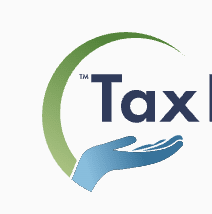
“Taxpayers use their refunds for a variety of reasons. Some of the most common are paying debt — achieving some tax relief — and getting caught up on bills. Using a tax refund to buy a car or make a down payment on a new one is also popular. Taxpayers often set aside their refunds to build their savings by starting an emergency fund,” says Edna Forero, an enrolled agent with more than 20 years of tax preparation experience.
But no matter your plans, waiting for the money to hit your bank account can be painful. We’ll share how you can easily track the status of your tax return so that you can confidently answer the question: “Where is my tax refund?”
How to Check Your Tax Refund Status
You can check your tax refund status with a few clicks by visiting the IRS website “Where’s My Refund?” page. The site updates every night, and you can see what’s happening with your return:
24 hours after e-filing the current year’s taxes
Three to four days after e-filing a previous year’s taxes
Four weeks after filing a paper return
How to Use the Where’s My Refund IRS Tool
- Gather your social security number (SSN) or individual taxpayer identification number (ITIN), your filing status (such as single or married), and the exact refund amount on your tax return.
- Navigate to the “Where’s My Refund?” page on the IRS website
- Fill out the four-question form (which asks for the information you gathered in step one plus the tax filing year).
- Hit submit.
After hitting submit, you’ll see one of three possible statuses:
- Return Received. The IRS has officially received your tax return and will begin processing it.
Refund Approved. The IRS has processed your tax return and agrees that you’re due a refund.
Refund Sent. The IRS has released the tax refund to you via direct deposit or paper check.
“The website only works if you have the exact information you filed with. So take note of your filing status and your exact refund amount,” notes Forero. “If filing with your spouse, remember to use the social security number of [the person] whose name appears first on the return. If your refund does not show it’s in process, verify that your return was accepted by the IRS.”
If you want to check your tax refund status from your mobile phone, you can also use the IRS2Go app. Here’s how:
Download the app from the iOS App Store or the Google Play Store.
Click on the “Refund Status” tab at the bottom of your screen.
Fill in your tax year, SSN or ITIN, filing status, and refund amount.
Click on “Get Status.”
You can also use the app to make tax payments (if you ever owe money to the IRS), get IRS contact information, or learn where to get the best tax relief companies.
Expected Timeframes for Refund Processing
The IRS states that it issues over 90% of refunds within 21 days of receiving a tax return. Forero said that most taxpayers can expect to see their money within seven to 10 days of the IRS receiving their completed filing.
However, in some cases, it can take much longer to receive your refund. For example, if you mail your tax return, you may need to wait several weeks to get your cash. If you submit an amended return, you may not get your funds for 20+ weeks.
You can get your refund faster if you use technology to submit your return and accept payment from the IRS. That means you should e-file your tax return and opt for direct deposit instead of a paper check.
Common Reasons for Delays in Refund Processing
“Delays can happen when the IRS rejects the return or finds an error. A name could be spelled wrong, or a social security number could be transposed. Whether you complete your own return using software or use a paid preparer, confirm the spelling of all names on your return and double-check the tax identification numbers (SSNs or ITINs) before submitting,” says Forero.
Plus, your return's processing could be delayed if you forget to complete or enclose all of the required supplemental forms. For instance, if you carry state-sponsored insurance under the Affordable Health Care Act (Obamacare) at any time during the year, even for one month, you should file a 1095-A Marketplace Statement with your tax return.
Your refund could still get held up even if you filed everything correctly and the IRS processed your return. If the return was accepted by the IRS, but the refund hasn't been released or deposited, the bank number being used could be wrong.
If the bank account owner isn't the same as the taxpayer, the IRS will not release the refund. Don't forget to check the bank account number you're using for direct deposit. If the IRS can’t issue your refund via direct deposit, you may receive a paper check, which can take significantly longer.
According to the IRS, there are a few other reasons you may need to wait to get your money, including:
Your return requires further review and can’t get processed as quickly as most other returns.
Your return has been impacted by fraud, identity theft, or suspicious bank activity.
You claimed the Earned Income Tax Credit or Additional Child Tax Credit on your return.
You have debt that some or all of your tax return will be used to repay. Debt can include federal or state tax debt, federal student loans, state unemployment compensation overpayment, back child support, or spousal support.
Your return includes Form 8379 (Injured Spouse Allocation), which can take as long as 14 weeks to process.
If the IRS needs more information or changes to your tax return, it will contact you by mail with the next steps.
Contacting the IRS for Refund Inquiries
Per the IRS, you should only contact the agency regarding your refund if the “Where’s My Refund?” tool advises you to. The system may also provide insight into what the IRS is doing with your return or instructions for what you should do next.
If you decide to contact the IRS without a directive from the tool, you must wait at least three weeks after e-filing your return or six weeks after mailing it in. Doing so will ensure the representative responding to you can research your case.
It’s generally best to call the IRS with your tax refund questions if these conditions are met. You can reach a representative at (800) 829-1040 from 7 a.m. to 7 p.m. local time.
According to the IRS, call wait times are generally the longest on Mondays and Tuesdays, during President’s Day weekend, and near the mid-April tax filing deadline. You may be able to get through faster if you call during an off-peak time.
“Put your phone on speaker and try calling later in the evening. You'll have more luck than first thing in the morning,” advises Forero.
You can also shorten the length of your call overall by being prepared. Know your SSN or ITIN, filing status, and date of birth, and have your current and prior year tax return and any correspondence from the IRS handy.
If you can’t reach an IRS representative by phone, you can speak with one in person. Start by looking up your local IRS office to book an appointment.
Utilizing Technology to Monitor Refund Status
Gone are the days when you had to mail your tax return and wait for weeks or months with no information for your refund check to arrive. Now, you have technology that expedites the entire process and keeps you better informed.
For instance, you can:
File your return electronically, and the IRS will receive it quickly. Plus, there’s no risk of it getting lost in transit.
Track the status of your return and refund from the “Where’s My Refund?” website or the IRS2Go app.
Elect to receive your refund via direct deposit instead of a paper check, shortening the time it takes to get your money from weeks or months to as little as seven to 10 days.
Monitor your bank account via an online platform or mobile app to see when your refund is available for withdrawal.
Pro Tip: Set a mobile alert for deposits. That way, you receive a text message when your refund (and other money) hits your account.
Precautions and Tips for Faster Refund Processing
Forero offered this bottom line: “The two top ways to get your refund faster: File electronically and use direct deposit for your refund.”
You should also follow these tips:
Double-check everything on your return before submitting it. A misspelled name or transposed social security number will delay processing.
Be sure to enclose all of the required forms with your return. Missing forms will postpone your refund.
Ensure your bank’s routing and account numbers are correct and you’re listed as the account holder. That way, the IRS has no problem issuing your refund via direct deposit.



